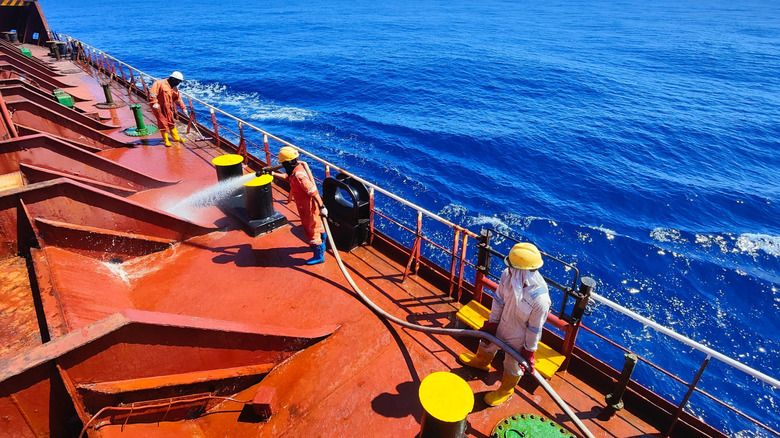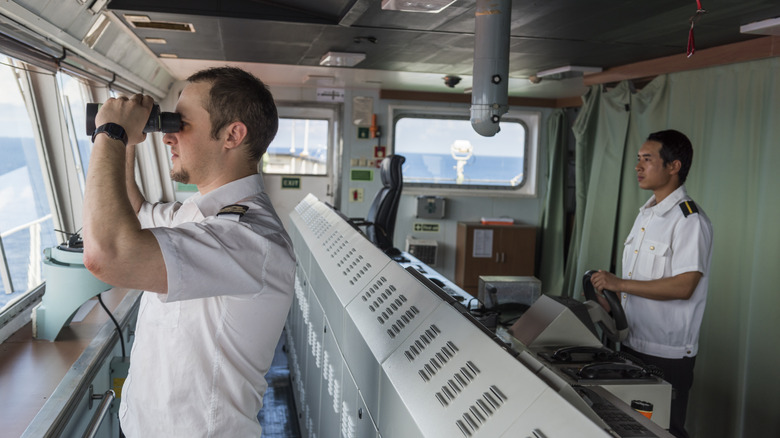How Big Is The Crew On A Cargo Ship?
Because of its role in global trade and economics, cargo ships are some of the most important vessels in the world. Carrying everything from grain and oil to vehicles and electronics, cargo ships travel vast distances to pick up and deliver their loads, with some routes taking more than a month to complete. Engineered to be powerful and durable enough to withstand rough seas and extreme weather, cargo ships are massive and are among the biggest ships in the world. These giants of the sea run with remarkably small crews, usually somewhere between 15 and 25, unlike the hundreds of people needed on cruise liners or naval vessels. Crew numbers are based on strict regulations within the shipping industry.
Every cargo ship must be registered under a national flag, and that flag state is responsible for ensuring the vessel complies with international safety standards. One key requirement is that ships follow the internationally recognized principles of safe manning, which set the minimum number of crew and requisite certifications needed to sail. A shipping company must conform to the stated manning requirements to be eligible to apply for a Minimum Safe Manning Certificate. The flag state maritime agency, which in the U.S. is the Coast Guard, will then assess the application, and if found satisfactory, a certificate with five-year validity will be provided, and the ship is permitted to sail. The rigidity of manning requirements in the industry is part of the maritime STCW code, which aims to prevent crew injury or death due to inadequately qualified manpower on a ship.
Cargo ships usually run with small, structured crews
A cargo ship must have enough crew to work its various departments, which are composed of three sections. The first is the deck section that oversees the general functions and navigation, led by the Captain and Chief Officer and supported by second and third officers and ordinary seamen. Next is the engine department, which runs engineering and propulsion, and is headed by the Chief Engineer, supported by other engineers and crew. Last is the steward department, which manages the food preparation and supply replenishment and can include a chief steward, chief cook, and other support staff.
While crews continue to be vital in cargo ship operations, several important developments in the cargo shipping industry will soon impact the number of crew deployments. Powered by advances in maritime technology, some cargo ships have already reached the point where no crew is present to man the ship. One of the first examples of automated cargo ships is the MV Yara Birkeland, which is a battery-run vessel capable of unmanned operations that has been plying a 30-mile route in Norway, delivering fertilizer since 2022.
Similar to other industries, modernization is the key to continued relevance; in the case of the shipping industry, the adoption of more efficient and environmentally friendly electric cargo ships is vital for long-term sustainability. While advances like automated cargo handling, remote or autonomous operations are the future, human crews will continue to play an essential role. This is because a ship's crew can quickly react, adapt, and make decisions, important functions where AI has limitations, which is why a combination of the strengths of technology and human experience may be the best option for operating cargo ships.

